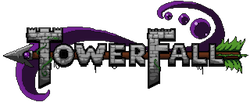
Terraria is an action-adventure sandbox game developed by Re-Logic. The game was first released for Windows on May 16, 2011, and has since been ported to several other platforms. The game features exploration, crafting, building, painting, and combat with a variety of creatures in a procedurally generated 2D world. Terraria received generally positive reviews and sold over 44 million copies by 2022, making it one of the best-selling video games.
Kixeye is a video game company founded in July 2007 and headquartered in Victoria, British Columbia, Canada. The company creates, develops and publishes massively multiplayer online real-time strategy games (MMORTS) for PC and mobile devices. Kixeye gained popularity as a pioneer in midcore action games featuring real-time combat on the social networking website Facebook. Following their initial launch, Kixeye's games generated twenty times more revenue per daily active user than other social games, retaining active users five times longer on average.

A microconsole is a home video game console that is typically powered by low-cost computing hardware, making the console lower-priced compared to other home consoles on the market. The majority of microconsoles, with a few exceptions such as the PlayStation TV and OnLive Game System, are Android-based digital media players that are bundled with gamepads and marketed as gaming devices. Such microconsoles can be connected to the television to play video games downloaded from an application store such as Google Play.

EA Sports UFC is a mixed martial arts fighting video game developed in a collaboration between EA Canada and SkyBox Labs, and published by EA Sports for PlayStation 4 and Xbox One. It is based on the Ultimate Fighting Championship (UFC) brand and was released on June 17, 2014. A playable demo was released on the PlayStation Network and Xbox Marketplace on June 3, 2014, with cover athletes Jon "Bones" Jones and Alexander "The Mauler" Gustafsson as playable fighters. It is the first UFC game since THQ sold the license to Electronic Arts.

TowerFall is an action indie video game created by Maddy Thorson through her company Maddy Makes Games. In the game, players control up to four archers in a multiplayer platform fighter. It was released on the Ouya microconsole in June 2013 and was later ported to PlayStation 4, Xbox One, Linux, OS X, and Windows as TowerFall Ascension and to the Nintendo Switch under its original title of TowerFall.

Monument Valley is an indie puzzle game developed and published by Ustwo Games. The player leads the princess Ida through mazes of optical illusions and impossible objects while manipulating the world around her to reach various platforms. Monument Valley was developed over ten months beginning in early 2013 based on concept drawings by company artist Ken Wong. Its visual style was inspired by Japanese prints, minimalist sculpture, and indie games Windosill, Fez, and Sword & Sworcery, and was compared by critics to M. C. Escher drawings and Echochrome. The art was designed such that each frame would be worthy of public display.

Threes is a puzzle video game by Sirvo, an independent development team consisting of game designer Asher Vollmer, illustrator Greg Wohlwend, and composer Jimmy Hinson. The game was released on February 6, 2014, for iOS devices and later ported to Android, Xbox One, and Windows Phone. In Threes, the player slides numbered tiles on a grid to combine addends and multiples of three. The game ends when there are no moves left on the grid and the tiles are counted for a final score.
Action Button Entertainment is a video game development studio consisting of Tim Rogers, Brent Porter, Michael Kerwin, and Nicholas Wasilewski that has produced five games: Ziggurat (2012), TNNS (2013), Ten by Eight (2013), Tuffy the Corgi (2014), and Videoball (2016). The group convened in 2010 as Rogers worked on Ziggurat based on an idea he had while playing Angry Birds that he could not complete on his own. Porter joined Action Button after responding to a call for artists Rogers made via Twitter, and Kerwin joined based on a connection he had with Rogers from producing a mockup of a game concept Rogers outlined in his Kotaku column.

Hundreds is a puzzle video game where players touch circles to make them grow without overlapping. In the game's 100 levels, the player interacts with different types of circles to bring a counter to the number 100. The game was developed and published by Semi Secret Software in collaboration with Greg Wohlwend and was released for iOS on January 7, 2013, and on Android later that year.

Puzzlejuice is a 2012 indie puzzle video game for iOS produced and developed by video game company Sirvo. The game is a combination of Tetris, tile-matching, and Boggle: players rearrange falling tetromino blocks into rows of similar colors, which turn into letters that are cleared from the board by forming words. The fast-paced game also includes challenges and power-ups. The development team consisted of three people; programmer Asher Vollmer initially developed the game alone, before reaching out to artist Greg Wohlwend for advice on the aesthetics. Composer Jimmy Hinson produced the game's music.

Asher Vollmer is an American indie video game developer. He created Puzzlejuice and Threes. Vollmer also worked on Guildlings and Beast Breaker.

Blek is a 2013 puzzle video game for iOS and Android by Kunabi Brother, a team of brothers Denis and Davor Mikan. The player draws a snakelike black line that recurs in pattern and velocity across the screen to remove colored dots and avoid black dots. It is minimalist in design, features excerpts of Erin Gee, and takes inspiration from Golan Levin, the Bauhaus, and Japanese calligraphy. The brothers designed the game as a touchscreen adaptation of the Snake concept and worked on the game for over six months. It was released in December 2013 for iPad, and was later released for other iOS devices and Android.

Vainglory is a free-to-play video game with in-game purchases, developed and published by Super Evil Megacorp for iOS, Android and PC. The game is a version of the MOBA wherein two opposing teams of three or five players fight to destroy the enemy by controlling the path between the bases, which is lined by turrets and guarded by AI-controlled enemy creatures called minions. Off the path, players battle for control points that provide resources. The game was released for iOS on November 16, 2014, after being soft-launched for over half a year, with the Android version being released on July 2, 2015. A Mac and Microsoft Windows version of the game was released in July 2018. Through cross-platform play, players on all four platforms can play together simultaneously.
Warhammer 40,000: Carnage is a mobile action role-playing video game developed and published by Canadian indie studio Roadhouse Games Ltd. It is based on Games Workshop's tabletop wargame franchise Warhammer 40,000. It released for the iOS and Android platforms in May and June 2014, respectively.

Hitman Go is a turn-based puzzle video game developed by Square Enix Montréal and published by Square Enix's European subsidiary. Announced in February 2014, the game was released for iOS in April 2014 and for Android in June 2014. Windows and Windows Phone versions were released the following year in April 2015. In February 2016, a "Definitive Edition" version was released on PlayStation 4, PlayStation Vita, and on Linux and Windows via Steam. It is the first game developed by Square Enix Montréal, a studio founded in 2011. Development entered full production in 2013 and was completed by eleven people using the Unity game engine.

Pokémon Shuffle is a freemium puzzle video game developed by Genius Sonority and published by Nintendo and The Pokémon Company for the Nintendo 3DS. The game, which is a spin-off of the Pokémon series and is similar in gameplay to Pokémon Battle Trozei, was released worldwide on the Nintendo eShop on February 18, 2015. Pokémon Shuffle Mobile, a version for Android and iOS devices, was released in August 2015.

Kim Kardashian: Hollywood is a casual free-to-play role-playing game that was released on iOS and Android on June 24, 2014. In the game, the player's goal is to increase their fame and reputation, starting on the E-list and rising to the A-list. The game is fronted by American media personality Kim Kardashian, featuring regular appearances from her character.

Breach & Clear is a turn-based strategy action role-playing video game developed by Mighty Rabbit Studios and published by Gun Media. The player is in control of four special forces units who must enter an area and kill all enemies in it. The player plans the actions of all characters in advance and the turns are resolved simultaneously. It was released for iOS on July 17, 2013 and for Android on September 5, 2013. The game was ported to Microsoft Windows, OS X and Linux, and was released through Steam on March 21, 2014. A PlayStation Vita version was released the following year. On November 15, the iOS version of the game joined the gaming subscription service GameClub. The physical version for Vita is notable as being the rarest released Vita game in North America, with a print run of 1,500 as a mail-in order title.

Dungeon Keeper was a freemium mobile massively multiplayer online strategy video game developed by Mythic Entertainment and released by Electronic Arts in 2014 for iOS and Android. A reboot to the Dungeon Keeper series, players construct and manage a dungeon, recruiting minions to run it, although the gameplay had a tower defence style, featuring frequent raids of others' dungeons and the defense of the player's. Players could participate in tournaments and leagues online.

Impossible Road is a minimalist action video game created by Canadian indie developer Kevin Ng. It was released for iOS in 2013, and later for Android.













